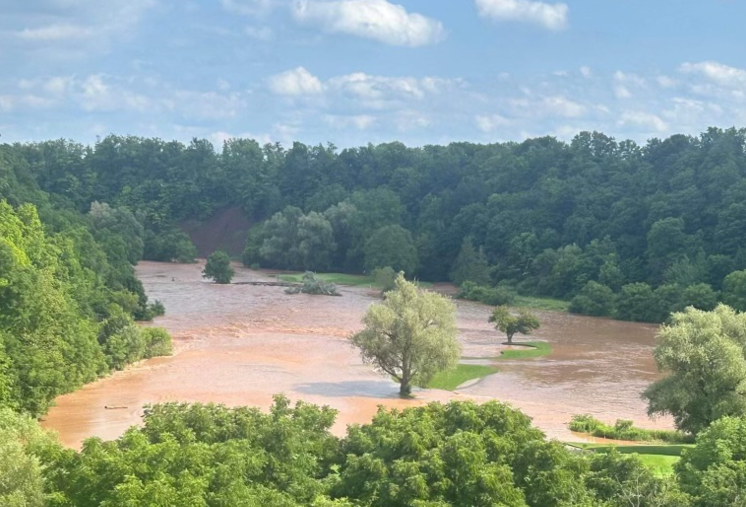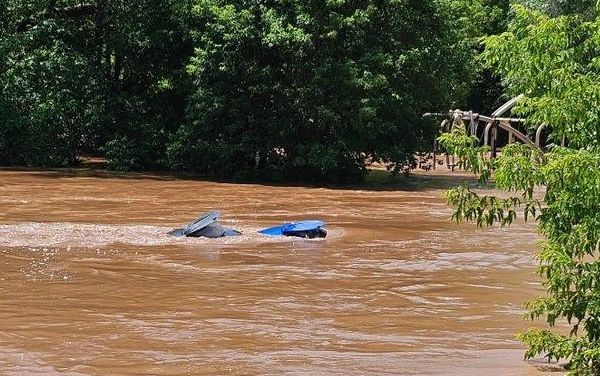Weathering the Storm: Oakville's Heavy Rainfall and Connection to Climate Change
Weathering the Storm: Oakville's Heavy Rainfall and Connection to Climate Change
Story by Oakvillegreen's Environmental Program Coordinator, Lacey Swamy

Photo Credit: Oakville News, 2024
Torrential downpour. Streets flooding. Parks, sports fields, and golf courses closed. Power outages. Events cancelled. Since the beginning of summer, Oakville has already experienced over 250mm of rain (Hamilton, 2024). That exceeds our average rainfall during this season, and we’re only halfway through July. Such flash flooding and heavy thunderstorms are beyond unusual, so what’s causing this change in nature?
With rising temperatures, there is an increased ability for the air to hold moisture. Regularly, Oakville’s humidity levels during this season fluctuate from 65-78%. However, this summer they have reached over 92% (Weather Atlas). This level of humidity makes intense thunderstorms extremely probable. These storms brew on the divide of warm and cool air, or in Oakville’s case, high humidity, and lakefront breezes. Due to the moisture in the air, thunderstorms come with heavy rainfall. And just when the storm is about to end, when the cool air from the thunderstorm’s downdraft should sink, high-temperature air strikes behind it, causing another storm to form. This repeating pattern is called training thunderstorms and is currently what Oakville is experiencing (The Weather Network, 2024). Canada is expected to warm faster than anywhere else in the world (McBean, 2024) and the ECC has predicted record-high temperatures this summer. This extreme weather is undoubtedly a ramification of climate change, so what are nature-based solutions to mitigate these effects?

Photo Credit: Town of Oakville, 2024
Green infrastructure is an innovative solution for managing stormwater. These systems allow pollutants from rainwater to be filtered and removed by letting them absorb into green infrastructure and slowing down its flow (CVC, 2023). A few examples are permeable pavement, infiltration chambers, green roofs, rainscaping, creek conservation, replacing lawn with more diverse vegetation, and treeplanting projects. These minimic nature’s natural features and in doing so reduce the risk of flooding and create a positive impact on climate change.
Oakvillegreen hopes you are staying safe in this time of extreme weather! If you are signed up for any of our events this summer, make sure to check your email for any cancellations or date changes. Together, we can work on nature-based solutions for preventing these intense storms.
References
Welcome to the jungle, Ontario: On pace for a record, rainy summer? - The Weather Network
July weather - Summer 2024 - Oakville, Canada (weather-atlas.com)
'Training' thunderstorms cause flash floods in Ontario, but what are they? - The Weather Network
Expert insight: Canada is warming faster than anywhere else on earth - Western News (westernu.ca)
https://cvc.ca/conversations/leading-the-way-in-stormwater-management/
